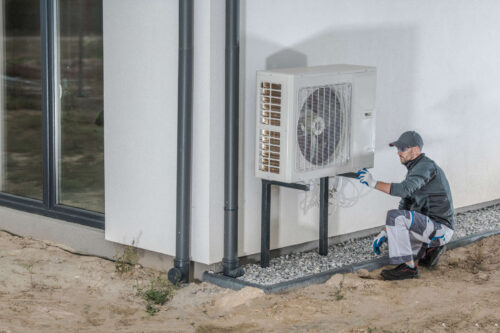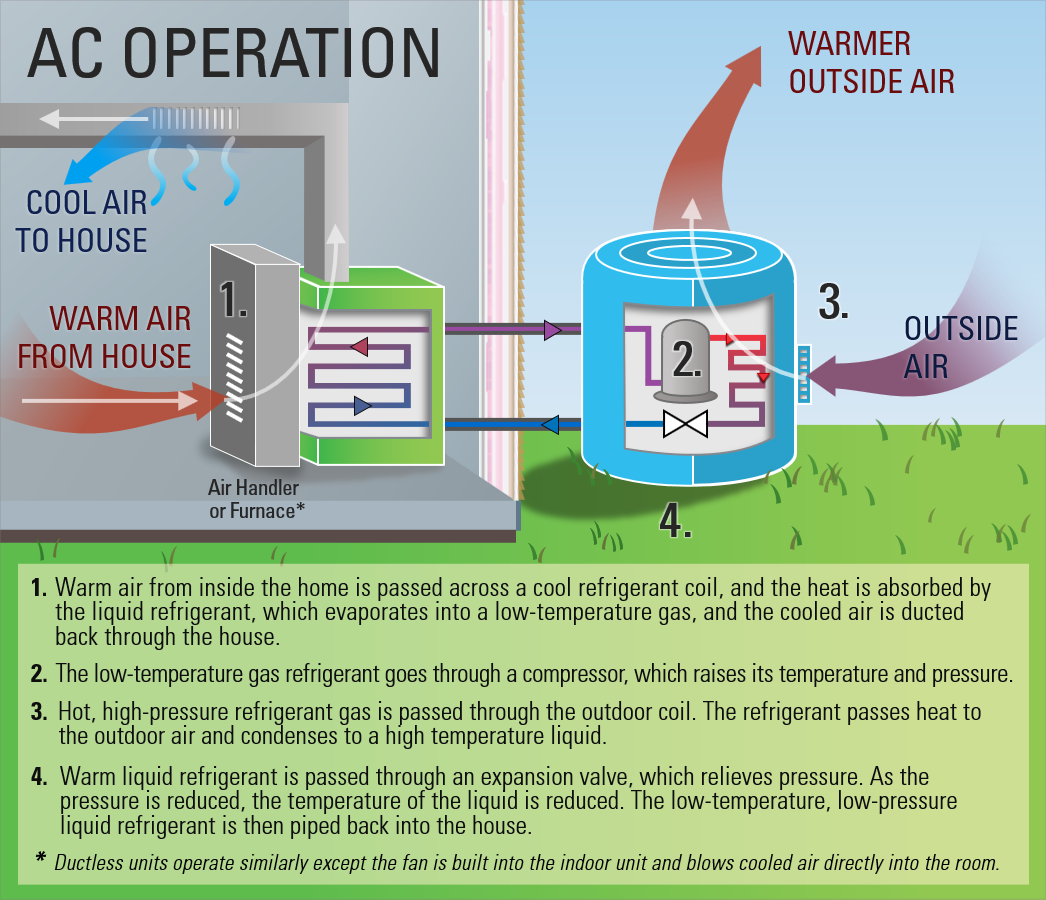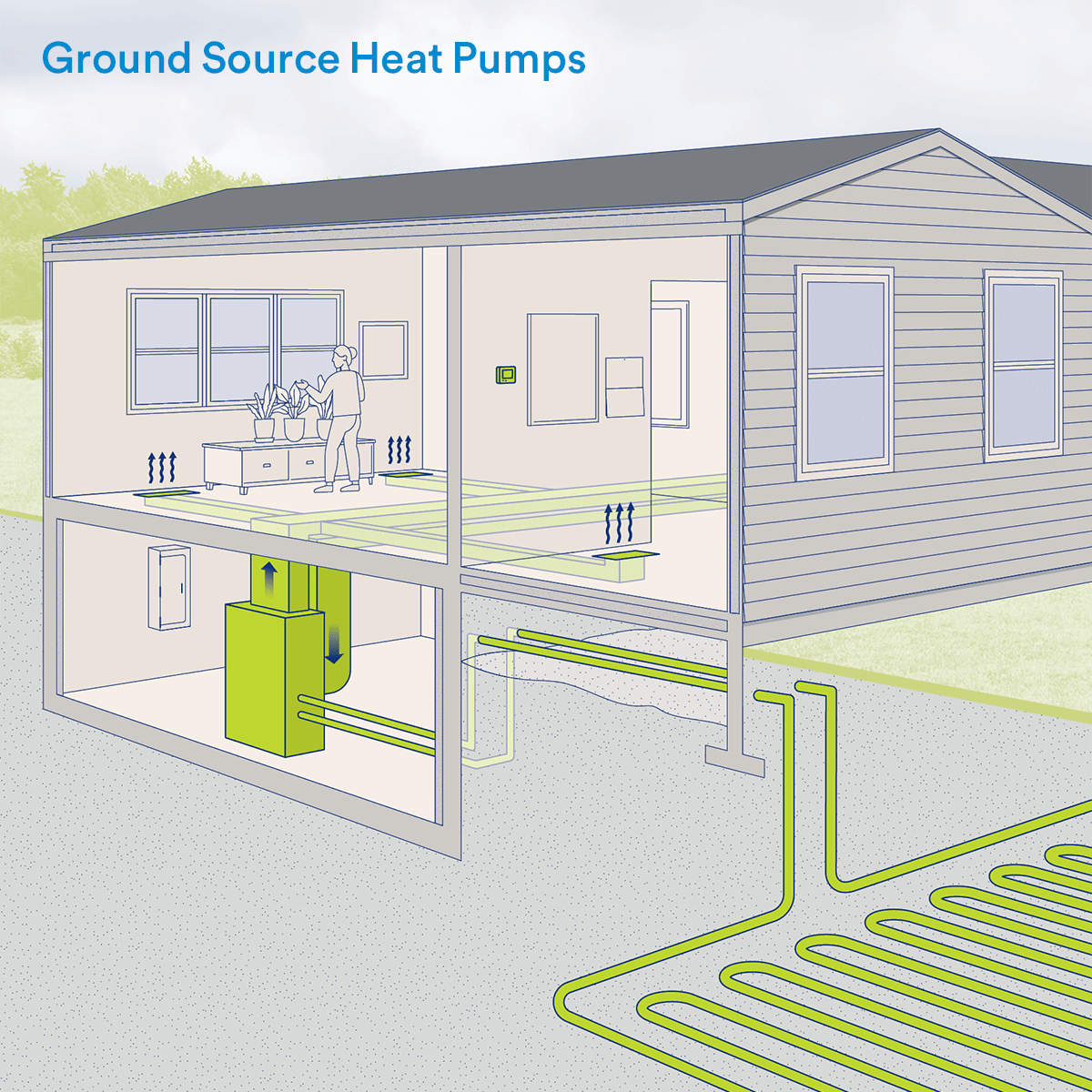Heat Pump Installation Project

Clean Energy 101: Heat Pumps
Why heat pumps are a cost-effective and climate-friendly solution for extreme heat waves and frigid winters.
Summer in the northern hemisphere is just a few weeks old, but temperature records have already toppled as heat waves baked regions from Scandinavia to Japan to the United States. The heat came early in India and Pakistan this year, with weeks of searing temperatures during deadly heat waves across March and April.
As cooling increasingly becomes a necessity for comfort and safety in buildings around the world due to climate change, an estimated 3.3 billion air-conditioning units are expected to be installed in the next few decades. As our friends at Canary Media pointed out in a recent episode of the Carbon Copy podcast, 18,000 central air-conditioning units are installed in US homes every week. But for millions of households and businesses that require cooling in summer and heating in winter, a heat pump can fill both needs superefficiently as a double-duty comfort machine.
These quiet and powerful all-electric appliances have been in the news a lot lately, including when President Joe Biden invoked the Defense Production Act to expedite US manufacturing of heat pumps and other clean energy technologies to bolster energy security, counter climate change, and create jobs. In this article, we’ll break down some of the most common types of heat pumps, how the technology works, and how heat pumps can save people money on heating and cooling, all while cutting planet-warming greenhouse gas emissions and leading the way to healthier indoor and outdoor air quality.
Heat Pumps: A Two-Way Solution for Year-Round Comfort
Heat pumps are different than traditional HVAC appliances in at least two big ways. First, many heat pumps can run in both heating and cooling mode — filling the role of both an air conditioner and a furnace. And second, a heat pump running in heating mode has one crucial, energy-saving edge over a traditional gas or electric furnace: the heat pump simply moves heat rather than creating it through fossil fuel combustion or electric resistance. This key differentiator enables heat pumps to reach far greater levels of efficiency.
Exhibit 1: A heat pump in cooling mode
Source: EPA
The basic principles of a heat pump are similar to those of a household refrigerator. Both technologies use a refrigerant to move heat from one side of the system to the other. When a standard residential heat pump runs in cooling mode (Exhibit 1), a low-pressure, low-temperature refrigerant absorbs heat from the indoor air, which is released outside when the refrigerant is compressed and passed through an outdoor heat exchanger. (This transport of heat is why your refrigerator releases some warm air into your kitchen as it cools your food and drinks.)
In heating mode, the flow of refrigerant reverses. The refrigerant absorbs heat from the outdoors and vaporizes inside the sealed system. Crucially, the refrigerants used in heat pumps have very low boiling points and can efficiently absorb heat even from cold winter air. That heat can then be moved to the indoor environment by compressing the vapor and passing it through an interior coil, where it releases some of its heat.
Because a heat pump merely moves heat rather than generating heat, it can produce over four times as much heat energy (in kWh) as it consumes in electricity, resulting in lower energy use and operating costs than electric resistance heaters. As shown below, heat pumps also greatly outperform gas furnaces. Importantly, heat pumps help home and building owners avoid the burning of gas indoors, removing any potential risks of carbon monoxide poisoning or dangerous gas leaks and explosions. And eliminating fossil fuel combustion has massive benefits to outdoor air quality and health as well. According to a Harvard T.H. Chan School of Public Health study, fossil fuel air pollution is responsible for one in five deaths worldwide.
Exhibit 2: Heat pump efficiency versus gas furnace efficiency
Source: RMI
Types of Heat Pumps
Air-source heat pumps (as shown in Exhibit 1) move heat from the indoor air to the outdoor air, or vice versa. Ground-source heat pumps (Exhibit 3) operate similarly, with the key difference being that the systems use the ground, which is relatively stable in temperature, as the outdoor medium for heat exchange — making them a great solution for very cold climates.
Exhibit 3: A horizontal ground-source heat pump
Source: Heat Pump Planner by NYSERDA, Building Energy Exchange, and Steven Winters Associates
Heat pumps can be ducted (with heated or cooled air forced through a series of ducts to reach different areas of the building) or ductless, commonly known as a mini-split system. A mini-split features multiple indoor units for precisely heating and cooling specific rooms or zones.
In addition to heat pumps for heating and cooling indoor air, other common household appliances like high-efficiency water heaters and dryers are also available that use heat pump technology. By harvesting heat energy from the ambient air, such as in an insulated garage or utility room, top-performing heat pump water heaters in the United States boast efficiency four times that of a conventional water heater.
Are Heat Pumps for Everyone?
Heat pumps have long been popular in mild climates but have often been dismissed as being poorly suited to cold winters. However, technological advances in recent years have made cold-climate heat pumps a practical solution even in subzero conditions. Heat pumps now factor prominently in climate action plans everywhere from Colorado to Maine. A recent RMI analysis of Wisconsin’s climate and energy mix shows that heat pumps in that northern state can save households hundreds of dollars a year over electric or propane furnaces. And it’s not just the United States: cold countries like Norway have some of the highest heat pump adoption rates in Europe.
Despite the fact that heat pumps are more efficient to operate, their up-front cost has been a persistent barrier to wider adoption. However, there are many scenarios where a heat pump can compete on purchase price. For instance, building new homes all-electric is generally cheaper than building mixed-fuel (electricity plus gas) homes, because the infrastructure needed to bring gas to a new building can cost roughly $5,000 for a single-family home. Going all-electric also cushions homeowners from volatile fossil fuel prices, which can be affected by global catastrophes such as Russia’s invasion of Ukraine.
Heat pumps are also a money-saving solution for homeowners looking to add or upgrade air conditioning and heating systems at the same time. A study by the Wisconsin Public Service Commission found that the combined cost of a furnace and air conditioner starts at $6,600, whereas a heat pump system costs as little as $2,300 (ductless) or $4,200 (ducted). In regions like the Pacific Northwest, where air-conditioning needs were previously rare, consumers can install a heat pump to cope with increasingly hot summers and replace an aging or inefficient furnace at the same time.
Electric utilities can help unlock the energy, cost, and carbon savings of heat pumps for everyone by subsidizing or otherwise incentivizing their purchase and installation. Government leaders across the globe should move quickly to protect people from intensifying heat waves and other weather extremes by advancing policies and programs that ensure efficient, healthy, and all-electric homes — especially for our most vulnerable citizens and communities. We must also invest in building and training the clean energy workforce that can get the job done.
Switching to a heat pump is a win today for household energy savings, human health and comfort, and the climate, and those benefits will only increase as the electric grid gets greener and more populations require clean heating and cooling solutions.

